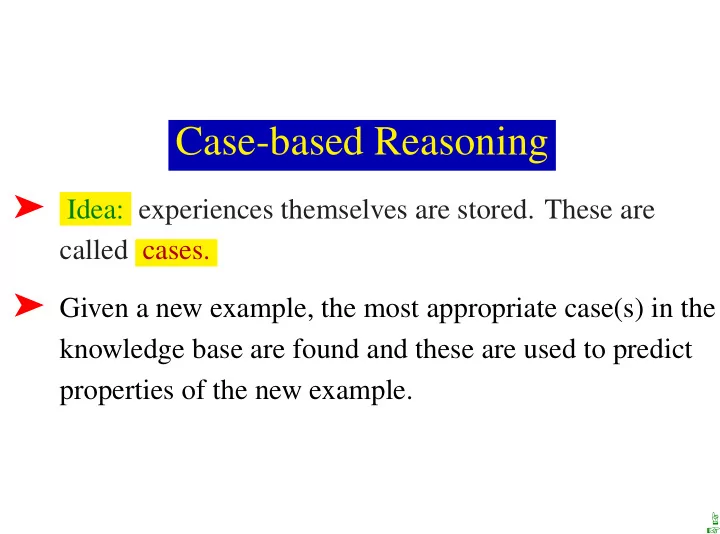

Case-based Reasoning ➤ Idea: experiences themselves are stored. These are called cases. ➤ Given a new example, the most appropriate case(s) in the knowledge base are found and these are used to predict properties of the new example. ☞ ☞
Extremes of Case-based Reasoning ➤ The cases are simple and for each new example the agent has seen many identical instances. Use the statistics of the cases. ➤ The cases are simple but there are few exact matches. Use a distance metric to find the closest cases. ➤ The cases are complex, there are no matches. You need sophisticated reasoning to determine why an old case is like the new case. Examples: legal reasoning, case-based planning. ☞ ☞ ☞
k -nearest Neighbors ➤ Need a distance metric between examples. ➤ Given a new example, find the k nearest neighbors of that example. ➤ Predict the classification by using the mode, median, or interpolating between the neighbors. ➤ Often want k > 1 because there can be errors in the case base. ☞ ☞ ☞
Euclidean Distance ➤ Define a metric for each dimension (convert the values to a numerical scale). ➤ The Euclidean distance between examples x and y is: �� w A ( x A − y A ) 2 d ( x , y ) = A ➣ x A is the numerical value of attribute A for example x ➣ w A is a nonnegative real-valued parameter that specifies the relative weight of attribute A . ☞ ☞ ☞
kd -tree ➤ Like a decision tree, but examples are stored at the leaves. ➤ The aim is to build a balanced tree; so a particular example can be found in log n time when there are n examples. ➤ Not all leaves will be an exact match for a new example. ➤ Any exact match can be found in d = log n time ➤ All examples that miss on just one attribute can be found in O ( d 2 ) time. ☞ ☞
Recommend
More recommend